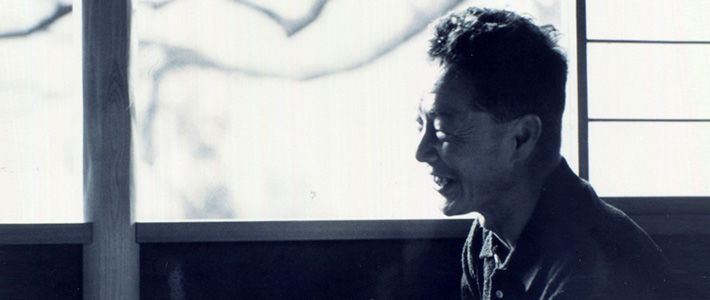
Siberian Colors: Japanese Artist Kazuki Yasuo’s Legacy of Hope
Culture- English
- 日本語
- 简体字
- 繁體字
- Français
- Español
- العربية
- Русский
The Japanese artist Kazuki Yasuo (1911–74) witnessed the atrocities of war, first as a soldier in Manchuria and then as a prisoner in Soviet labor camps in Siberia. After returning to Japan, he depicted his experiences in a stirring collection of oil paintings known as the Siberia Series. The works, 57 in all, established him as a leading Western-style artist. Now, 40 years after the painter’s death, the series remains a stark and hauntingly beautiful portrayal of conflict and internment.
Kazuki began to shape the series shortly after his repatriation in 1947. The painter touched briefly on his traumatic ordeal in two early pieces, but it was not until the late 1950s, after developing the techniques that came to be known as his “Siberian style,” that he began in earnest to portray the trauma he endured in war and in Russia’s frozen north. Kazuki painted until his death in 1974, creating the core of his iconic series in the 1960s.
Like other Japanese survivors of the Russian labor camps, Kazuki seldom spoke of his internment to his family, perhaps out of difficulty in finding words to convey the brutality of the experience. Where words failed, though, he turned to paint and canvas to portray the unspeakable images burned in his memory. Below I explore the artist and the concepts behind his Siberian Series.
Teacher, Husband, Father
Born in 1911 in the village of Misumi, Yamaguchi Prefecture, Kazuki dreamed early on of being an artist. After completing his secondary education, he applied and was eventually accepted to the Tokyo Fine Arts School (now Tokyo University of the Arts). Under the tutelage of the famed artist Fujishima Takeji, he studied the works of noted oil painters like Maurice de Vlaminck, Vincent van Gogh, Pablo Picasso, and Umehara Ryūzaburō.
After graduating, he returned to Yamaguchi, where he took a position as an art teacher at a high school in Shimonoseki and started a family. He continued to paint, balancing his work and domestic duties with his artistic endeavors. In 1939 he received his first major recognition when his oil painting Usagi (Rabbit) won honors at an exhibit sponsored by the Ministry of Education.
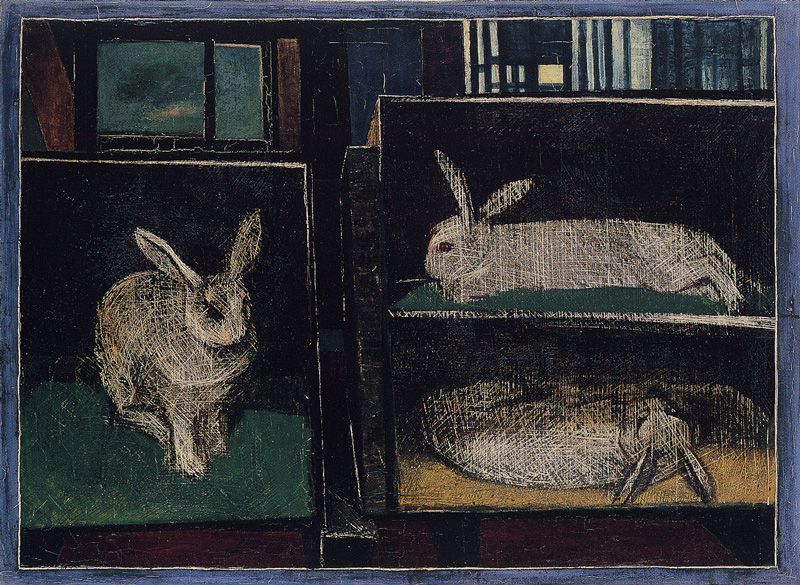 Kazuki’s 1939 oil painting Usagi. (Courtesy of the Kazuki Yasuo Museum)
Kazuki’s 1939 oil painting Usagi. (Courtesy of the Kazuki Yasuo Museum)
A prolific painter, Kazuki toyed with different themes, developing his style and technique with pieces that combined somber tones and melancholic lyricism. In late 1942, though, Japan’s involvement in World War II abruptly sidetracked his artistic ambitions when he was called up for military service.
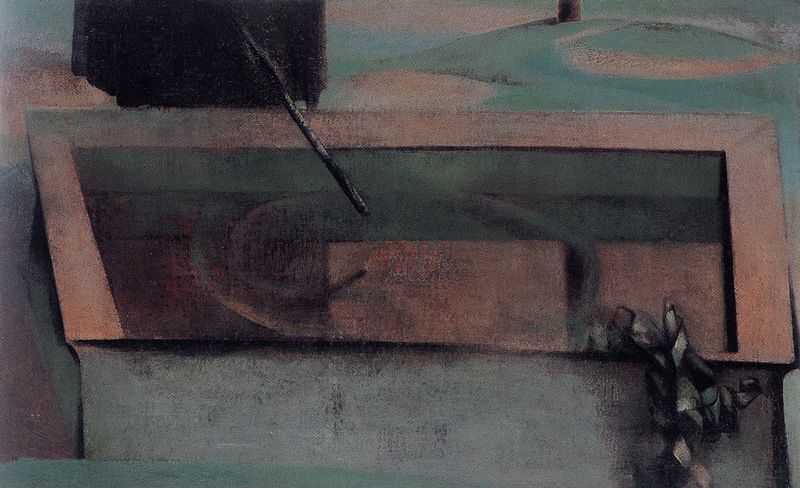 The 1943 oil painting Hamon (Ripple). (Courtesy of the Kazuki Yasuo Museum)
The 1943 oil painting Hamon (Ripple). (Courtesy of the Kazuki Yasuo Museum)
Kazuki in April 1943 left Shimonoseki aboard a transport ship bound for Manchuria, where he remained stationed until the end of the war. After Japan’s surrender, he and hundreds of thousands of other Japanese were held captive by the Soviet army in Siberian labor camps. Finally, in May 1947, after years of hardship, Kazuki returned to civilian life and his family in Yamaguchi.
A New Mode of Expression
Kazuki was home only a few months before he picked up his brushes and palette to produce Ame (ushi) (Rain and Ox), a modest, warm-colored work that initiated what came to be known as the Siberia Series.
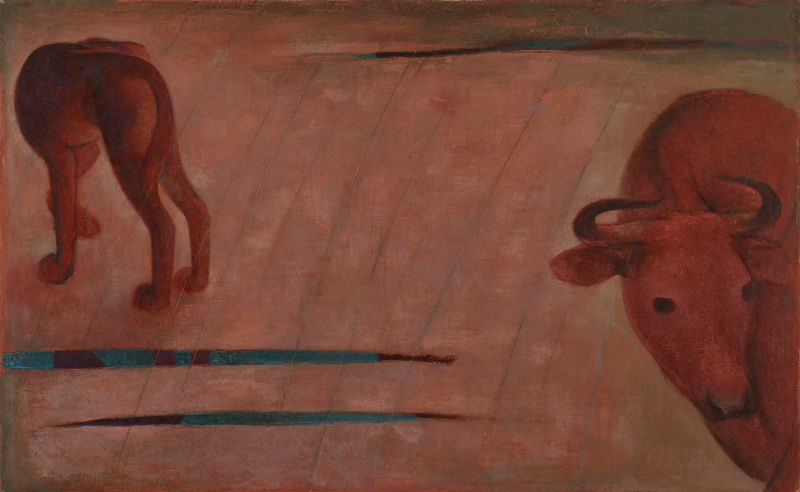 Kazuki painted Ame (Ushi) in 1947 shortly after being repatriated to Japan. (Courtesy of the Yamaguchi Prefectural Art Museum)
Kazuki painted Ame (Ushi) in 1947 shortly after being repatriated to Japan. (Courtesy of the Yamaguchi Prefectural Art Museum)
He followed this with Maisō (Burial) in 1948. These early attempts to represent his memories of war and incarceration were the only Siberian paintings Kazuki created in his first decade back in Japan. He would not revisit this traumatic period until forging a completely new style of expression.
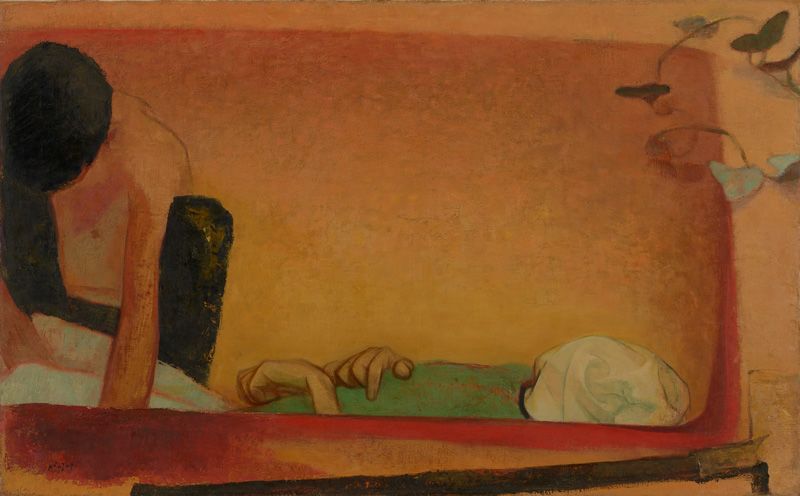 The 1948 work Maisō (Burial). (Courtesy of the Yamaguchi Prefectural Art Museum)
The 1948 work Maisō (Burial). (Courtesy of the Yamaguchi Prefectural Art Museum)
For most of the 1950s Kazuki spurned weighty themes. Instead, he poured his creative energies into still-life paintings featuring plants, animals, and other common objects around him, trading his prewar preference for faint, melancholy tones for a style marked by brighter shades and simple, light-hearted scenes. He was especially partial to scenes centered on food—a bowl of vegetables set on a chair or a cut of meat on a table—leading many critics to label him as a “kitchen specialist.”
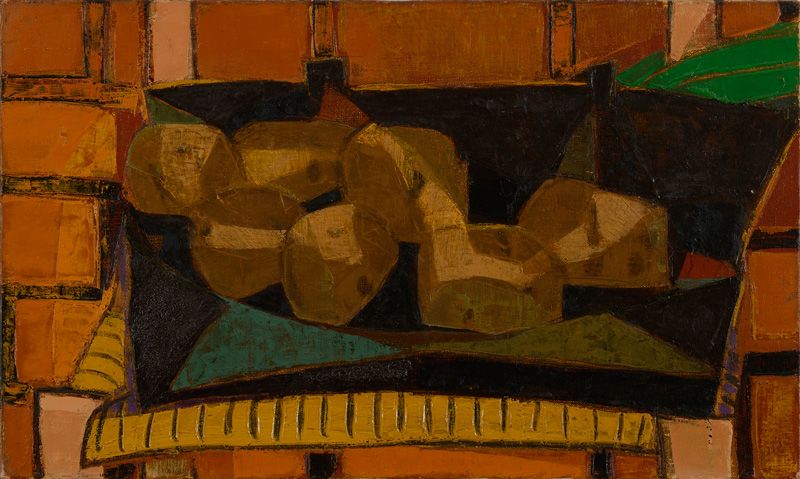 Bareisho (Potatoes), painted in 1953, is one of Kazuki’s numerous still-life works. (Courtesy of the Yamaguchi Prefectural Art Museum)
Bareisho (Potatoes), painted in 1953, is one of Kazuki’s numerous still-life works. (Courtesy of the Yamaguchi Prefectural Art Museum)
As he struggled to find a new artistic voice, Kazuki, who had been orphaned as a boy, found special solace in the company and support of his young family. It was a relatively happy time as the artist gave himself over to the simple pleasures of portraying the minutiae of his surroundings, following his artistic whims and experimenting with colors and imagery.
 The artist at his studio in 1951. (Courtesy of the Kazuki Yasuo Museum)
The artist at his studio in 1951. (Courtesy of the Kazuki Yasuo Museum)
Over the decade he slowly moved away from the bright hues of his earlier works, coming to fill his palette with the black, gray, and ocher shades that define the Siberian style. In 1959 Kazuki unveiled three paintings in the Siberian Series, starting with the stirring Kita e nishi e (To the North, to the West).
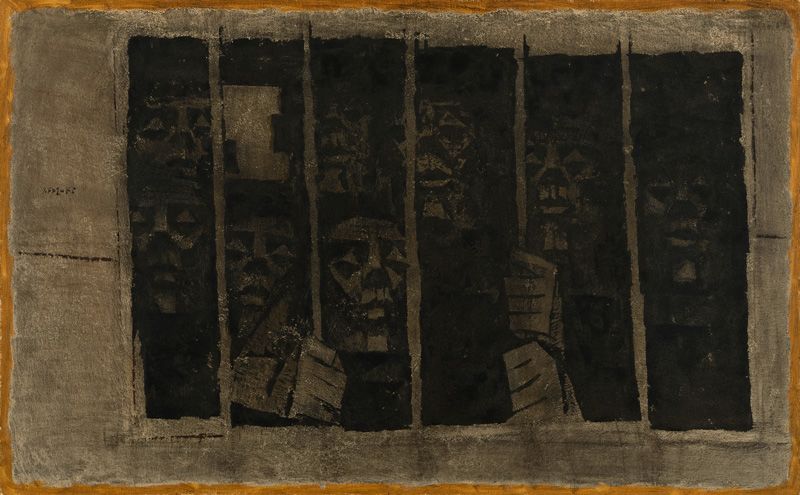 Kazuki drew on his memories of captivity to create the 1959 Kita e nishi e (To the North, to the West). (Courtesy of the Yamaguchi Prefectural Art Museum)
Kazuki drew on his memories of captivity to create the 1959 Kita e nishi e (To the North, to the West). (Courtesy of the Yamaguchi Prefectural Art Museum)
The Duality of Rain
From then on Kazuki worked feverishly on the series, producing from one to five works each year until his death in 1974. In his 1970 autobiography Watashi no Shiberia (My Siberia), the artist describes the evolution of his iconic series. “In painting Maisō,” he writes, ”I wanted to warmly depict the burial of my fellow soldier. After returning to Japan, I had a penchant for using vibrant colors, probably as a way to convince myself that the dark days of the war were finally over. This is why the hues of the painting are different from others in the series. After completing the piece, though, I couldn’t do any more Siberian works. I needed to take time and put things in perspective.”
After returning home, Kazuki found the sentimental tones of his earlier style woefully inadequate for depicting his harsh experience. The first two paintings in the series, while beautiful, are more fanciful works of art than candid testimonies of the horrors he witnessed.
In his account of his life, the artist touched on the discord he felt during this period, pointing to differences in his two paintings on the subject of rain, the 1947 Ame (ushi) and the 1968 Ame (Rain). “It wasn’t until 1968,” he writes, “that I was finally able to strip away any latent romanticism I had about rain and paint it as it had fallen on the battlefield.”
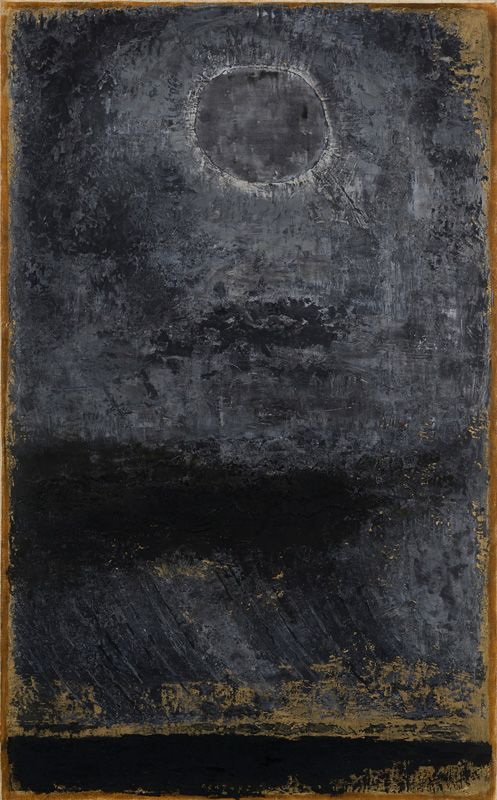 Kazuki’s 1968 work Ame (Rain). (Courtesy of the Yamaguchi Prefectural Art Museum)
Kazuki’s 1968 work Ame (Rain). (Courtesy of the Yamaguchi Prefectural Art Museum)
The brightly lit still-lifes of Kazuki’s “kitchen” period undoubtedly served a cathartic purpose for the artist, allowing him to work through the trauma of his captivity. They are splendid works in their own right, and had Kazuki never returned to the Siberian Series he would have certainly earned a modicum of acclaim for the unconstrained composition and elegant sense of color that define the collection.
Siberia continued to call to Kazuki from the abyss of his memory, though, making it inevitable that he would return to the theme. The years he remained silent on the subject were spent searching for a path across the void separating his artistic style and the raw emotions and memories of his experience.
Reliving Siberia
Kazuki did not produce the Siberian Series in chronological order but painted the works at random, putting them on canvas as they crystalized in his memory. There is little doubt that he would have continued the series beyond 57 paintings had his death not intervened.
The artist led a quiet life in Misumi. As he went about his daily routine, he never knew what might bring a dormant image rushing back the surface, compelling him to render it on canvas. One example is the 1965 painting Tōdo (Frozen Earth), depicting the tracks of a Soviet tank on the frozen Siberian soil. The wartime image had stayed hidden in Kazuki’s mind for two decades until stirred to life by activity at a riverside construction site near his home. The only way for the painter to come to terms with the countless scenes burned in his mind was to depict each in turn as they came to the forefront of his memory.
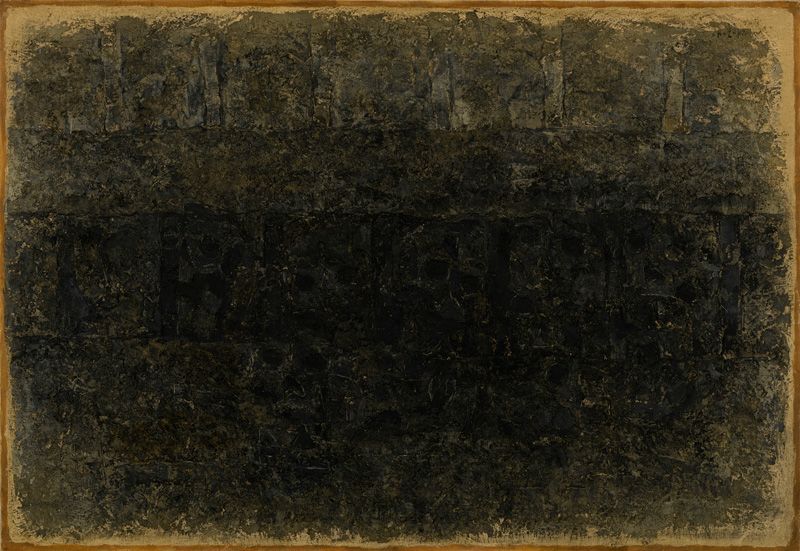 The 1965 work Tōdo (Frozen Earth) depicts Soviet tank tracks. (Courtesy of the Yamaguchi Prefectural Art Museum)
The 1965 work Tōdo (Frozen Earth) depicts Soviet tank tracks. (Courtesy of the Yamaguchi Prefectural Art Museum)
The Siberian Series is strongly associated with the antiwar sentiment of the postwar years when its paintings appeared. However, Kazuki was not trying to convey a specific social message through his works. The works are a personal account of his captivity—one of a myriad of Siberias that existed for internees in that frozen wasteland. Even now, well into the twenty-first century, they continue to draw admirers not for any political message they may contain but for their humanism. The series tells a gripping and universally understood story of love of family, awe at nature, anger at fate’s cruel twists, sadness, resignation, and hope.
“If I had not experienced war,” Kazuki wrote, “I would almost certainly have gone on living a tedious life. Intervening as it did, though, it has served to make me the person I am today.”
Kazuki reveals his soul in the Siberian Series. The 57 paintings are a legacy of an artist who was able to find hope among the bitter wreckage and pain of his memories.
(Originally published in Japanese on December 14, 2016. Banner photo: Kazuki Yasuo smiles as he talks with an unnamed person. Image courtesy of the Kazuki Yasuo Museum.)